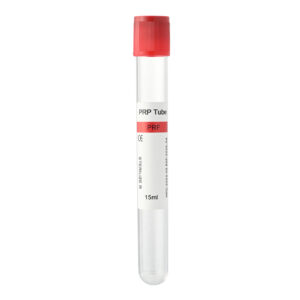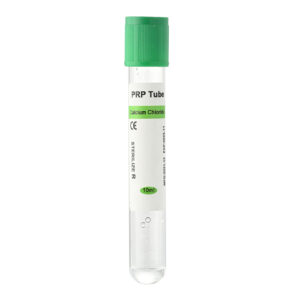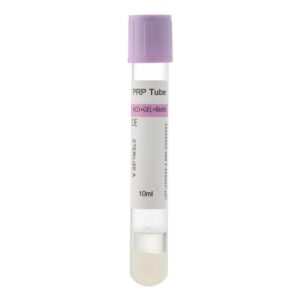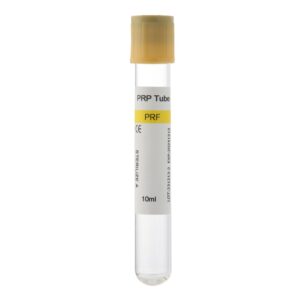What is L-PRF?
What is L-PRF? Leukocyte- and Platelet-Rich Fibrin is an improved form of PRF. Is rich in platelets and fibrin and also contains a large number of leukocytes. Leukocytes have immunomodulatory and antibacterial functions, making L-PRF more effective in tissue repair and infection control. The centrifugation process and parameters for L-PRF are designed more precisely to ensure optimal separation and concentration of leukocytes and platelets. The three-dimensional fibrin network of L-PRF provides an excellent scaffold for cells and promotes the sustained release of growth factors, aiding long-term tissue repair and regeneration.
The preparation and application of L-PRF are equally simple. However, due to its higher content of leukocytes and platelets, L-PRF offers greater biological activity and therapeutic effects, particularly in clinical scenarios requiring strong anti-infective and immunomodulatory capabilities.
What is PRF?
Platelet-rich fibrin (PRF) is an autologous blood concentrate extracted from a patient’s blood through centrifugation. PRF is rich in platelets and fibrin, crucial in wound healing and tissue regeneration. Platelets release various growth factors, such as Platelet-Derived Growth Factor (PDGF), Transforming Growth Factor-β (TGF-β), and Vascular Endothelial Growth Factor (VEGF), which promote cell proliferation, angiogenesis and tissue repair. The preparation process of PRF is simple, requiring no anticoagulants or chemicals relying solely on the patient’s blood components.
The advantages of PRF include its simple and quick preparation process, low cost, and the absence of exogenous substances, reducing the risk of immune reactions. Consequently, PRF is widely used in dentistry, orthopaedics, and plastic surgery to promote wound healing, bone regeneration, and soft tissue repair.
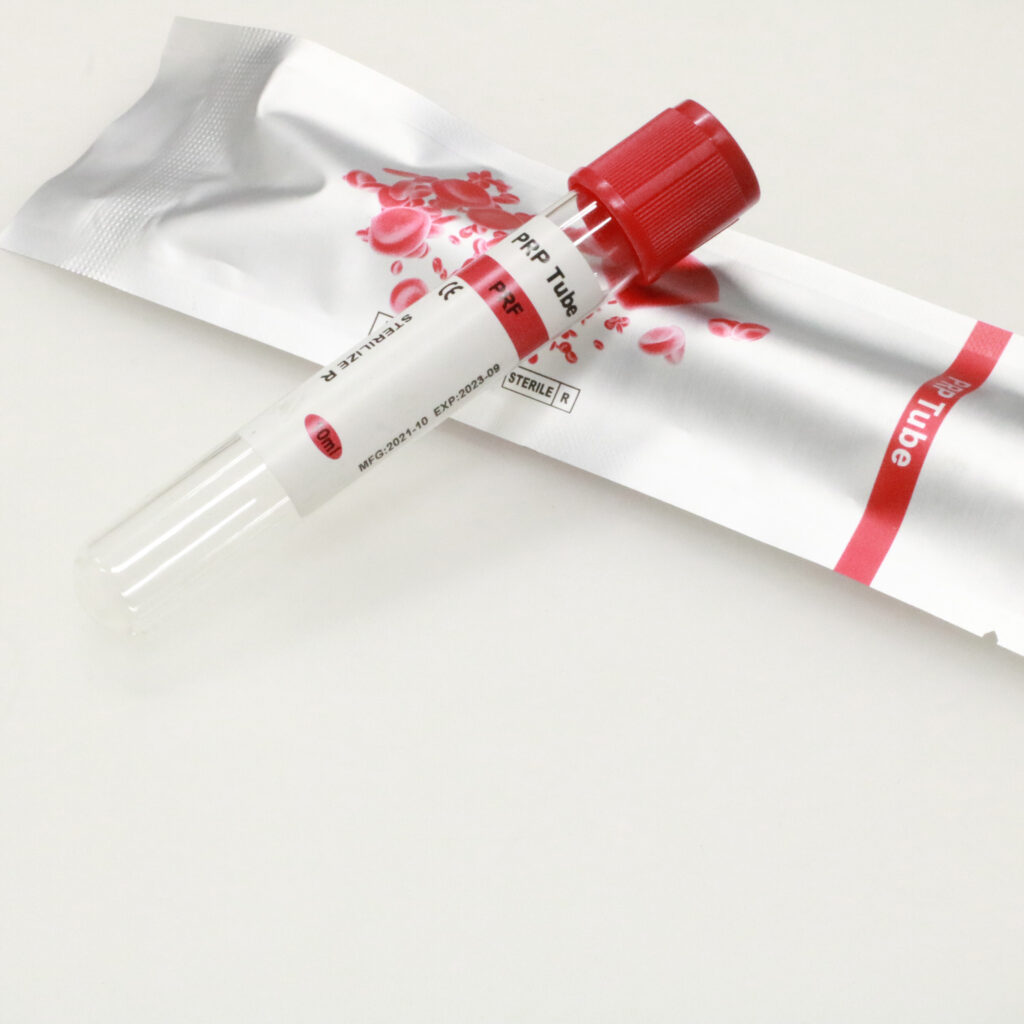
Usage Methods
PRF
- Blood Collection: Collect a certain amount of blood from the patient’s vein, usually 10-20 millilitres per operation.
- Centrifugation: Place the blood in a centrifuge for specific time and speed settings, typically around 10 minutes at 3000 rpm.
- PRF Extraction: After centrifugation, separate the upper plasma layer and the middle platelet concentrate to create a gel or membrane. These can be directly used in clinical applications.
- Application to Surgical Site: Apply PRF directly to tissues requiring healing and regeneration, such as alveolar bone and soft tissue defects. PRF can be used as a filling material to promote tissue healing and regeneration.
L-PRF
- Blood Collection: Similarly, blood from the patient’s vein is collected, usually in the same amount as PRF.
- Centrifugation: Perform centrifugation with specific parameters to ensure the extraction of leukocytes and platelets. The settings are more precise, often involving different centrifugation stages for optimal separation.
- Extraction: Extract the fibrin layer rich in leukocytes and platelets to form a gel or membrane. The extraction process of L-PRF needs to be more careful to avoid the loss of leukocytes and platelets.
- Application to Surgical Site: Apply L-PRF to the treatment site, such as fracture areas or periodontal surgical sites. L-PRF can be a filling material or a covering membrane, providing stronger anti-infective and tissue repair effects.
Comparison Between PRF and L-PRF
| Feature | PRF | L-PRF |
| Components | Platelets, fibrin | Platelets, fibrin, leukocytes |
| Main Functions | Promotes healing and regeneration | Promotes healing, antibacterial, immunomodulatory |
| Preparation Process | Simple centrifugation | Specific centrifugation parameters includes leukocytes |
| Application Fields | Dentistry, orthopedics, plastic surgery | Dentistry, orthopaedics, plastic surgery, wound healing |
| Growth Factor Release | High | Higher |
| Anti-infective Ability | General | Excellent |
| Tissue Regeneration Effect | Significant | More significant |
Advantages and Applications of PRF and L-PRF
Advantages:
- Simple and Quick Extraction Process: The preparation process for PRF is straightforward, quick, and suitable for rapid clinical application.
- Rich in Growth Factors: PRF contains various growth factors that significantly promote cell proliferation, angiogenesis, and tissue repair.
- Versatility: PRF can be made into gels or membranes suitable for different clinical needs, with a wide range of applications.
Applications:
- Dental Surgery: Used for healing after tooth extraction, periodontal surgery, implants, etc., PRF can accelerate wound healing and reduce postoperative complications.
- Orthopedic Surgery: Used for fracture healing and bone grafting, PRF accelerates bone healing by promoting bone cell proliferation and angiogenesis.
- Soft Tissue Repair: Used for wound healing and skin regeneration, PRF can be used as a filling material or covering membrane, promoting soft tissue regeneration and repair.
Advantages and Applications of L-PRF
Advantages:
- Contains Leukocytes: L-PRF is rich in leukocytes, which have stronger antibacterial and immunomodulatory functions, significantly reducing the risk of postoperative infections.
- Higher Growth Factor Release: The synergistic effect of platelets and leukocytes in L-PRF releases more growth factors, promoting faster and more effective tissue regeneration.
- Long-lasting Tissue Repair Effect: The three-dimensional fibrin network of L-PRF provides an excellent scaffold for cells, promoting cell migration and proliferation and aiding long-term tissue repair.
- Wide Clinical Applications: L-PRF is suitable for surgeries requiring rapid healing and anti-infection, with broad application prospects.
Applications:
- Dental Surgery: Used for complex periodontal and implant surgeries, L-PRF can promote rapid healing of soft and hard tissues, reducing postoperative complications.
- Orthopedic Surgery: Used for fractures, joint repairs, and bone grafting, L-PRF can accelerate bone regeneration and healing, increasing surgery success rates.
- Wound Healing: Used for chronic wounds, burns, and soft tissue defects, L-PRF significantly improves wound healing through its antibacterial and immunomodulatory functions.
- Plastic Surgery: Used for post-surgery recovery in cosmetic and reconstructive surgeries, L-PRF accelerates skin and soft tissue regeneration, enhancing surgical outcomes.
Specific Differences Between PRF and L-PRF
PRF (Platelet-Rich Fibrin) and L-PRF (Leukocyte- and Platelet-Rich Fibrin) are both platelet concentrates extracted from the patient’s blood to promote tissue healing and regeneration. They differ in composition, preparation process, and clinical applications. We extract PRF using simple centrifugation techniques, and it mainly consists of platelets and fibrin. Platelets release various growth factors, such as PDGF, TGF-β, and VEGF, which promote cell proliferation, angiogenesis, and tissue repair. The preparation process of PRF is simple and requires no anticoagulants or chemicals, relying solely on the patient’s blood components.
L-PRF is an improved version of PRF, containing platelets, fibrin, and many leukocytes. Leukocytes have immunomodulatory and antibacterial functions, making L-PRF more effective in tissue repair and infection control. The centrifugation process and parameters for L-PRF are designed more precisely to ensure optimal separation and concentration of leukocytes and platelets. The three-dimensional fibrin network of L-PRF provides an excellent scaffold for cells and promotes sustained release of growth factors, aiding long-term tissue repair and regeneration.
It aids in healing after tooth extraction, periodontal surgeries, implants, fracture healing, and soft tissue repair. PRF’s preparation process is simple and quick, has a low cost, and has no exogenous substances, reducing the risk of immune reactions. L-PRF, containing more leukocytes and platelets, provides stronger biological activity and therapeutic effects, especially in clinical scenarios requiring strong anti-infective and immunomodulatory capabilities. L-PRF is suitable for complex periodontal surgeries, implant surgeries, fractures, joint repairs, bone grafting, chronic wounds, burns, soft tissue defects, and post-surgery recovery in cosmetic and reconstructive surgeries.
Conclusion
Due to its simple preparation process and significant release of growth factors, PRF finds extensive use in dental and orthopedic surgeries. With added leukocytes, L-PRF provides stronger anti-infective and immunomodulatory functions, suitable for more complex surgeries and hard-to-heal wounds. Both play significant roles in their respective fields, providing better patient treatment outcomes.
With technological advancements and more profound clinical applications, PRF and L-PRF will play essential roles in more medical fields, advancing tissue repair and regenerative medicine. For example, in treating hard-to-heal wounds such as diabetic foot and pressure ulcers, L-PRF has vast application prospects.

